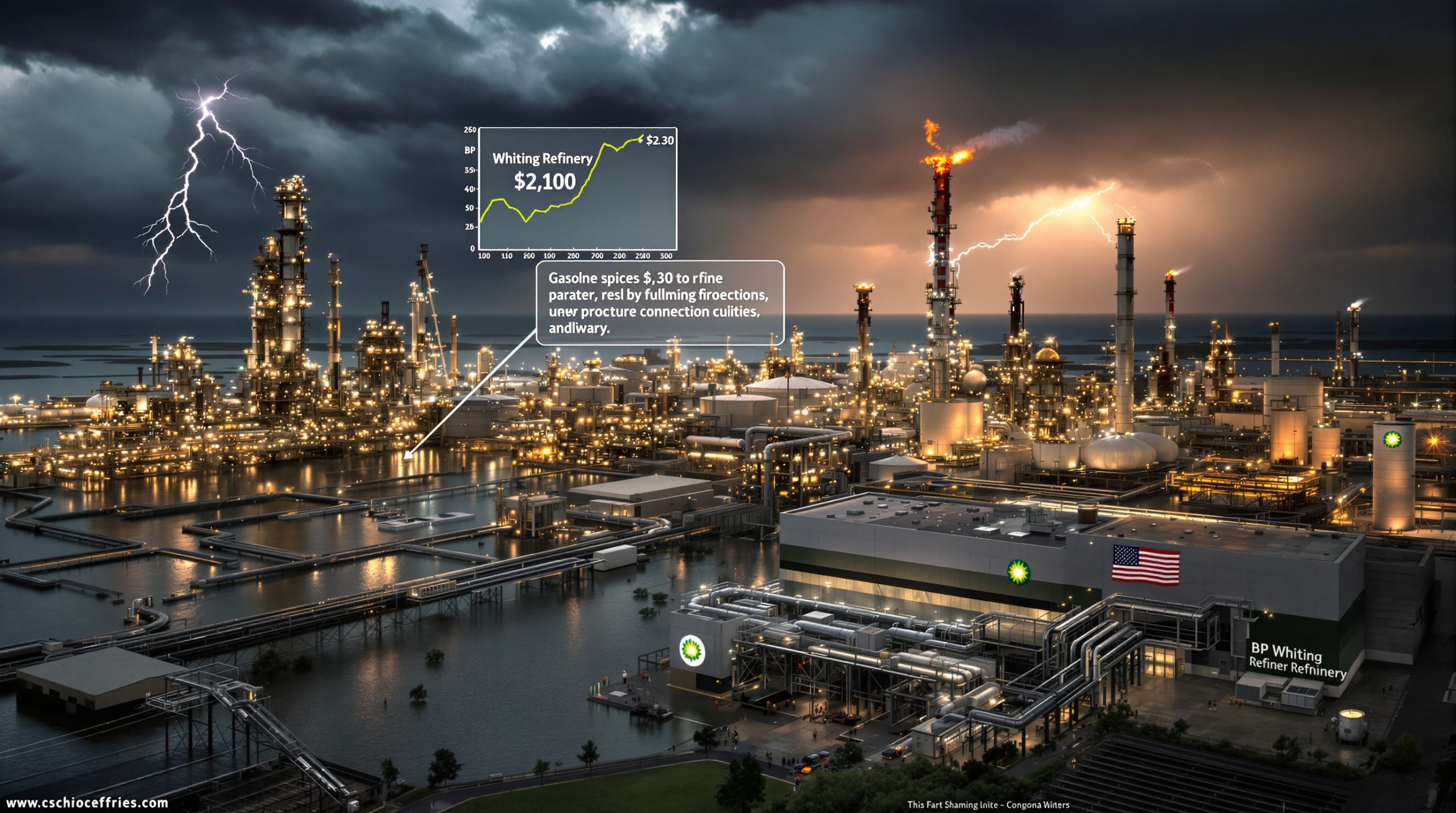Why Are Magnesium Prices Declining? Market Analysis and Future Outlook
The magnesium market is experiencing significant downward price pressure in mid-2025, with notable shifts in both domestic Chinese production and international trade dynamics. As one of the lightest structural metals with applications across automotive, aerospace, and electronics industries, magnesium's price movements provide important signals about broader industrial demand and manufacturing trends.
What's Causing the Current Magnesium Price Decline?
Supply-Demand Imbalance in the Magnesium Market
The primary driver behind the current magnesium price decline is a growing imbalance between production capacity and actual market demand. According to the latest Shanghai Metal Market (SMM) data from July 2025, inventory pressure at production facilities has increased substantially, forcing manufacturers to reconsider their pricing strategies.
Transaction volumes in early July 2025 have been characterized as merely "average" by industry analysts, indicating stagnation rather than growth. This tepid demand coincides with robust production capacity, creating downward pressure on spot prices across major manufacturing regions.
SMM market intelligence indicates that the magnesium supply chain is experiencing a classic oversupply scenario, with warehouses in key production hubs like Fugu showing increasing stockpiles. The mismatch between current output and consumption has created a challenging environment for producers attempting to maintain price stability.
"The current market dynamics reflect a fundamental disconnect between production planning and actual industrial consumption," notes a senior metals analyst at SMM. "Without a significant demand catalyst, this imbalance will continue to pressure prices."
Strategic Price Reductions by Producers
In response to sluggish demand and growing inventories, manufacturers have implemented strategic price reductions to stimulate market activity. SMM reports documented a significant price reduction of 50 yuan/mt in a single trading day between July 1-2, 2025, bringing the current price range to 16,100-16,300 yuan/mt with mainstream transactions settling at 16,100 yuan/mt.
This tactical pricing approach represents a calculated effort by producers to maintain cash flow and market share while managing growing stockpiles. Rather than curtailing production—which involves high restart costs—many manufacturers have opted to preserve operational continuity while accepting lower margins temporarily.
The current pricing strategy follows historical patterns seen in previous market downturns, where Chinese magnesium producers have typically preferred volume maintenance over price protection during periods of oversupply. However, the current discount of 50 yuan/mt is relatively modest compared to more aggressive cuts seen in previous cycles, suggesting producers remain confident in eventual market stabilization.
How Are International Markets Responding to Magnesium Price Changes?
Foreign Trade Order Dynamics
International market response to magnesium price changes has been cautious, with significant disparities emerging between current spot rates and foreign buyer expectations. According to foreign trade specialists interviewed by SMM, many international buyers secured earlier contracts at substantially lower prices, creating reluctance to engage at current market rates despite recent declines.
An anonymous foreign trade trader quoted by SMM noted: "Prices of foreign trade orders taken earlier were relatively low, and current market transaction prices still exceed buyer purchase intentions, resulting in low purchase willingness."
This price expectation gap has created friction in international trade flows, with many foreign buyers adopting a wait-and-see approach rather than rushing to secure supplies at what they perceive as temporarily elevated prices. The situation is further complicated by regional price variations that affect international competitiveness, with some European buyers shifting sourcing strategies toward lower-cost alternatives.
Currency fluctuations have added another layer of complexity to the export market. While the Chinese yuan has remained relatively stable against major currencies in mid-2025, even minor exchange rate movements can significantly impact already thin profit margins for exporters working with previous low-price commitments.
Risk Management Strategies by Buyers
International magnesium buyers have increasingly shifted toward sophisticated risk management approaches to navigate price volatility. The SMM report indicates a growing preference for futures contracts among international customers, who are strategically choosing longer delivery timeframes to secure more favorable pricing.
"Some customers have chosen to purchase magnesium ingot futures with lower prices and longer delivery times to avoid price fluctuation risks," reports SMM, citing insights from foreign trade specialists.
This risk mitigation behavior represents an evolution in procurement strategies, with buyers demonstrating greater sophistication in commodity trading insights. By extending delivery timelines, buyers effectively trade immediate possession for price certainty—a calculated approach that protects against unexpected market swings.
The growing prevalence of early order locking has significantly impacted spot market demand, with many international buyers having already secured their requirements through forward contracts. This advance purchasing behavior has further reduced current spot market liquidity, contributing to the price pressure observed in early July 2025.
Comparative analysis between spot and futures markets shows a notable contango structure (where futures prices exceed spot prices), reflecting market expectations of eventual price stabilization or recovery despite current weakness.
What Factors Are Limiting Further Price Declines?
Supply Constraints in Production Regions
Despite the downward price trend, several factors are preventing more dramatic declines. Chief among these is the current limitation in spot supplies at major production facilities. According to SMM, "spot supply at most magnesium plants in the main production areas is tight," creating a natural floor for prices despite weak demand.
This supply constraint appears counterintuitive given the reported inventory pressure, but reflects a complex reality where finished inventory may be accumulating while immediate spot availability remains limited. Production capacity utilization rates across key manufacturing regions remain robust, with most facilities operating at near-optimal levels to maintain economies of scale.
Regional supply chain bottlenecks—particularly in transportation and logistics networks connecting Shaanxi and Shanxi provinces to export hubs—have created additional friction in the market. These infrastructure constraints have paradoxically helped establish a price floor by preventing seamless inventory movement that would otherwise increase spot availability.
The technically complex nature of magnesium production, which requires careful control of temperature, pressure and environmental conditions, limits producers' ability to rapidly adjust output in response to market conditions. This operational inflexibility further contributes to the establishment of a price floor despite current market weakness.
Manufacturing Cost Considerations
Production economics represent another critical factor preventing steeper price declines. While SMM does not explicitly detail current cost structures, industry analysis indicates that magnesium ingot production involves substantial fixed costs that establish minimum sustainable price thresholds.
Energy costs remain the dominant component in magnesium production economics, typically accounting for 35-45% of total manufacturing expenses. Coal prices in key production regions have remained relatively stable in mid-2025, neither providing significant relief nor adding pressure to producer margins.
Raw material inputs—primarily dolomite and ferrosilicon—have seen modest price fluctuations but remain within historical norms, maintaining the established cost basis for production. Labor costs in primary production regions have seen incremental increases in line with broader Chinese manufacturing sector trends.
The combination of these production cost components establishes a functional floor price below which producers would operate at unsustainable losses. Industry analysts estimate this floor at approximately 15,500-15,800 yuan/mt based on current input costs, suggesting limited room for further significant declines from the current 16,100 yuan/mt level.
What's the Market Outlook for Magnesium Prices?
Short-Term Price Projections
The immediate outlook for magnesium prices suggests continued stability within the current range, with limited catalysts for significant movement in either direction. SMM projects that "magnesium prices will remain in the doldrums" in the near term, with the counterbalancing forces of weak demand and tight spot supply creating an equilibrium.
For Q3 2025, market analysts anticipate a trading range of 15,800-16,500 yuan/mt, with mainstream transactions likely to continue near the lower end of this band. This projection reflects the fundamental supply-demand dynamics currently governing the market, with neither factor poised to shift dramatically in the immediate future.
Key indicators that might signal potential price reversals include unexpected production disruptions (which would support prices) or significant demand improvements from automotive or aerospace sectors (which account for approximately 34% and 17% of global magnesium consumption respectively).
Seasonal demand patterns typically show modest strengthening in late Q3 as manufacturing sectors prepare for Q4 production peaks, though the effect may be muted in 2025 given current inventory levels and economic uncertainty in key consuming regions.
Long-Term Market Fundamentals
Looking beyond immediate market conditions, structural supply-demand balances for 2025-2026 suggest eventual normalization. Global magnesium consumption is projected to grow at 3.2-3.8% annually through 2026, driven primarily by lightweighting initiatives in automotive manufacturing and expanding aerospace production.
The current production capacity development pipeline shows limited additions planned for 2025-2026, with most major Chinese producers focusing on efficiency improvements rather than capacity expansion. This measured approach to capacity growth should eventually allow demand to catch up with supply, supporting price stabilization and potential modest appreciation by mid-2026.
Emerging technologies—particularly in electric vehicle battery casings and structural components—represent a potential growth catalyst for magnesium consumption. The metal's combination of lightweight properties, structural strength, and EMI shielding capabilities makes it increasingly attractive for next-generation mobility applications.
Environmental regulations, particularly carbon emission constraints, represent a wildcard for future pricing. As energy-intensive magnesium production faces increasing scrutiny, compliance costs could eventually establish a higher cost floor for production, though the timeline for significant impact extends beyond the immediate forecast period.
How Does the Magnesium Market Compare to Other Minor Metals?
Cross-Metal Market Correlations
Magnesium's price performance shows both similarities and divergences when compared to related minor metals. Silicon metal, which shares some production geography and end-use applications with magnesium, has demonstrated more stability in 2025, maintaining price levels within a narrower band despite similar industrial demand dynamics.
Titanium, another lightweight structural metal with overlapping applications, has shown stronger performance due to aerospace-specific demand that has been less affected by broader industrial slowdowns. This divergence highlights the importance of application-specific demand drivers even among metals with seemingly similar market positions.
Investment flows across the broader metals complex have generally favored more established commodities like copper and aluminum during recent market uncertainty, leaving minor metals like magnesium with thinner trading volumes and greater susceptibility to specific supply-demand imbalances.
The specialized nature of the magnesium market—with relatively few major producers and consumers compared to mainstream metals—creates distinctive price formation dynamics that sometimes diverge from broader commodity trends. This market structure can lead to both greater volatility during disruptions and more pronounced price floors during downturns.
Industrial Application Demand Trends
Automotive sector consumption of magnesium is projected to reach 285,000 metric tons in 2025-2026, representing moderate growth despite production challenges in traditional vehicle manufacturing. The shift toward electric vehicles has partially offset weakness in conventional auto production, as EV designs increasingly incorporate magnesium components to compensate for battery weight.
Aerospace industry demand patterns show resilience compared to other sectors, with expected consumption of approximately 112,000 metric tons in 2025. The long development and production cycles in aerospace manufacturing provide greater stability in consumption trends, making this sector less responsive to short-term economic fluctuations.
Construction sector utilization of magnesium alloys has shown modest growth, primarily in specialized applications where weight reduction provides significant structural or economic advantages. However, this segment remains relatively small compared to automotive and aerospace applications.
Electronics manufacturing represents an emerging consumption driver, with growing use of magnesium in lightweight casings for portable devices. This application sector is projected to consume approximately 68,000 metric tons in 2025, with growth potential dependent on consumer electronics refresh cycles and new product introductions.
FAQ: Magnesium Market Trends and Price Dynamics
What are the main applications driving magnesium demand?
Magnesium consumption is predominantly driven by automotive manufacturing (34%), aerospace applications (17%), aluminum alloying (15%), electronics (10%), and construction materials (8%), with remaining usage distributed across various specialized applications.
Growth trends vary significantly by sector, with automotive showing volatility due to production challenges but strategic commitment to lightweighting, while aerospace demonstrates more consistent demand growth tied to long-term production plans for commercial and military aircraft.
Emerging applications in battery technologies and specialized electronics represent promising growth opportunities, though from relatively small current consumption bases. These applications leverage magnesium's unique combination of properties—low density, good mechanical strength, and excellent EMI shielding characteristics.
Substitution risks exist primarily in cost-sensitive applications where aluminum alloys or reinforced polymers can potentially replace magnesium components if price differentials become significant. However, in performance-critical applications, magnesium's unique property profile makes substitution more challenging.
How do production costs affect magnesium pricing?
Energy represents the dominant cost component in magnesium production, typically accounting for 35-45% of total manufacturing expenses. The Pidgeon process used for approximately 85% of global magnesium production is particularly energy-intensive, requiring significant heat for thermal reduction of magnesium oxide.
Raw material costs—primarily dolomite, ferrosilicon, and calcined magnesia—contribute approximately 25-30% of production expenses. These inputs have shown relative price stability in recent periods, neither providing significant cost relief nor adding substantial pressure to producer margins.
Labor and regulatory compliance costs have gradually increased in key production regions, particularly in China where environmental standards for magnesium production have tightened. These regulatory requirements have established a higher cost floor for compliant producers compared to historical production economics.
Regional cost advantages remain significant, with Chinese producers maintaining approximately 15-20% lower all-in production costs compared to Western manufacturers due to integrated supply chains, established infrastructure, and production scale advantages.
What regional factors influence global magnesium prices?
Production concentration creates significant regional influence on global pricing, with China accounting for approximately 85% of world magnesium output. This concentration means that Chinese domestic market conditions—including energy costs, environmental regulations, and local demand—disproportionately impact global price formation.
Transportation and logistics costs have growing influence on regional price differentials, particularly as freight rates have demonstrated greater volatility. The relatively low value-to-weight ratio of magnesium makes logistics costs a meaningful component of delivered pricing, creating differential impacts based on proximity to production centers.
Regulatory environments vary significantly between regions, with Chinese producers facing increasing environmental compliance requirements that establish higher cost floors compared to historical operations. These regulatory factors create evolving regional production economics that influence long-term supply development.
Trade policy considerations—including tariffs, export restrictions, and strategic stockpiling—periodically impact market dynamics. Current trade structures remain relatively stable, though strategic material security initiatives in Western nations have created discussions around diversifying supply sources beyond current concentration.
The trade war impacts between major economies have also influenced magnesium prices, with tariffs affecting trade flows and creating regional price disparities. The ongoing economic tensions between the US and China in particular have affected magnesium powder prices, as noted in recent market analyses from ChemAnalyst.
How do magnesium futures contracts work?
Magnesium futures provide a price discovery mechanism and risk management tool for market participants, allowing producers and consumers to hedge against price volatility. Standard contracts typically specify standard-grade magnesium ingot (99.9% purity) in quantities of 5 metric tons per contract.
Hedging strategies vary between producers and consumers, with producers typically selling futures contracts to lock in forward prices for planned production, while consumers purchase futures to establish price certainty for expected consumption needs. This bilateral hedging creates natural market liquidity.
The relationship between spot and futures pricing provides important signals about market expectations, with contango structures (futures exceeding spot) suggesting anticipated recovery, while backwardation (spot exceeding futures) indicates expectations of price normalization from elevated levels.
Contract settlement mechanisms include both physical delivery and cash settlement options, with physical delivery specifications requiring conformance to established quality standards and designated warehouse delivery locations in key trading hubs.
Market Data: Magnesium Price Trends and Comparisons
| Date | Price Range (yuan/mt) | Mainstream Transaction Price (yuan/mt) | Daily Change |
|---|---|---|---|
| July 2, 2025 | 16,100-16,300 | 16,100 | -50 yuan/mt |
| July 1, 2025 | 16,150-16,350 | 16,150 | — |
| Q2 2025 Average | 16,520-16,720 | 16,575 | -3.4% (quarter) |
| Q1 2025 Average | 17,100-17,300 | 17,160 | +1.8% (quarter) |
Conclusion: Navigating the Current Magnesium Market
The current magnesium price decline reflects a complex interplay of supply-demand imbalances, strategic producer responses, and evolving international market dynamics. While near-term pressures are likely to maintain the current price range, longer-term fundamentals suggest eventual stabilization as inventory levels normalize and industrial demand recovers.
Market participants should monitor key indicators including production discipline among major manufacturers, automotive sector demand trends, and international trade flows for signals of potential price direction changes. The counterbalancing forces of production economics and tepid demand will likely maintain price stability within the current range absent significant external catalysts.
The mining industry evolution will also play a crucial role in determining future magnesium price trajectories, as technological innovations and sustainability initiatives reshape extraction and processing methods. Furthermore, the broader US economic outlook and continued developments in iron ore pricing insights provide additional context for understanding the complex factors influencing magnesium markets globally.
Disclaimer: This market analysis contains forward-looking statements regarding commodity prices and market conditions. Such projections involve inherent risks and uncertainties, and actual outcomes may differ materially from those anticipated. This analysis should not be considere
Want to Spot the Next Major Mineral Discovery?
Discover why significant ASX mineral announcements can lead to substantial returns by exploring Discovery Alert's dedicated discoveries page, powered by their proprietary Discovery IQ model that transforms complex mining data into actionable investment opportunities. Begin your 30-day free trial today at Discovery Alert to position yourself ahead of the market for the next major resource discovery.




